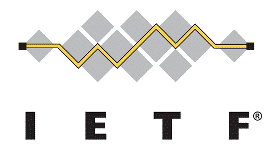The Internet Engineering Task Force has had an ongoing debate about inclusiveness in many dimensions. Many of us lament that there are not more women engaged in the industry; and that we are unable to engage in a better way engineers from developing countries. However, there is also a debate about the interdisciplinary aspects of our work, where the merits of engaging beyond the engineering discipline becomes a bit less clear.
In the early 1990s Marshall Rose somewhat cynically coined the term many fine lunches and dinners to describe conferences like the IETF.1 It is comforting, therefore, to have learned that we were following in the footsteps of great minds.
In the 1920s, there were a number of physics conferences, and one in particular in Brussels that featured Bohr, Einstein, Planck, Born, the Joliot-Curies, Pauli, Heisenberg, and others. The vast majority of the attendees were Europeans (and men). The European aspect was due to location of the conference and the difficulty of traveling across continents.
“God does not throw dice” was the hotly debated statement versus quantum theories. Heisenberg later recounted that they all stayed in the same hotel, and that the real discussions occurred not during the paper presentations, but at dinners.2 I don’t think we can say that those conferences were where the true discoveries occurred, but I think they helped in directing researchers in the right direction. This is why the IETF meets in person from time to time. This is also why hybrid work is so important, where one splits time working with others and on one’s own.
People who attended those conferences in the 1920s were physicists, and they were very focused on a very narrow a particular aspect of physics, even though those aspects had profound consequences to society. Had they invited philosophers, my take is that the philosophers would have gotten in the way, and neither group would have gotten anything out of the interchange.
IETF conferences and work styles are aimed at engineers. That aspect should not change, and in some cases perhaps it should even revert a bit. However, the practice of engineering evolves, just as the understanding of physics did back then. A colleague of Einstein’s dressed him down for using such a simple platitude as an argument, and you can read in the record how the “old guard” (yes, even Einstein) was slow to accept new concepts. This sounds eerily familiar, and is a cautionary tale to those of us in that group to pay attention to new concepts.
Engaging new blood is key to any organization. Traveling internationally to new places to find new people may or may not be valuable. The IETF tried this in 2014 by traveling down to Buenos Aires, to see if we could engage more people. The answer seems to have been no, but the costs of going to Argentina also seemed relatively small. To me, it increasingly difficult to justify in this day and age that the conference has not been held in India.
- Rose, M., The Open Book: A Practical Perspective On OSI, Prentice Hall, 1990. ↩︎
- Rhodes, R., The Making of the Atomic Bomb, Simon and Schuster, 1987. ↩︎


 Mark Crispin passed away on the 28th of December. While I didn’t know him well, Mark was a very important visionary in the area of Internet applications, and Email and character sets in particular.
Mark Crispin passed away on the 28th of December. While I didn’t know him well, Mark was a very important visionary in the area of Internet applications, and Email and character sets in particular.
